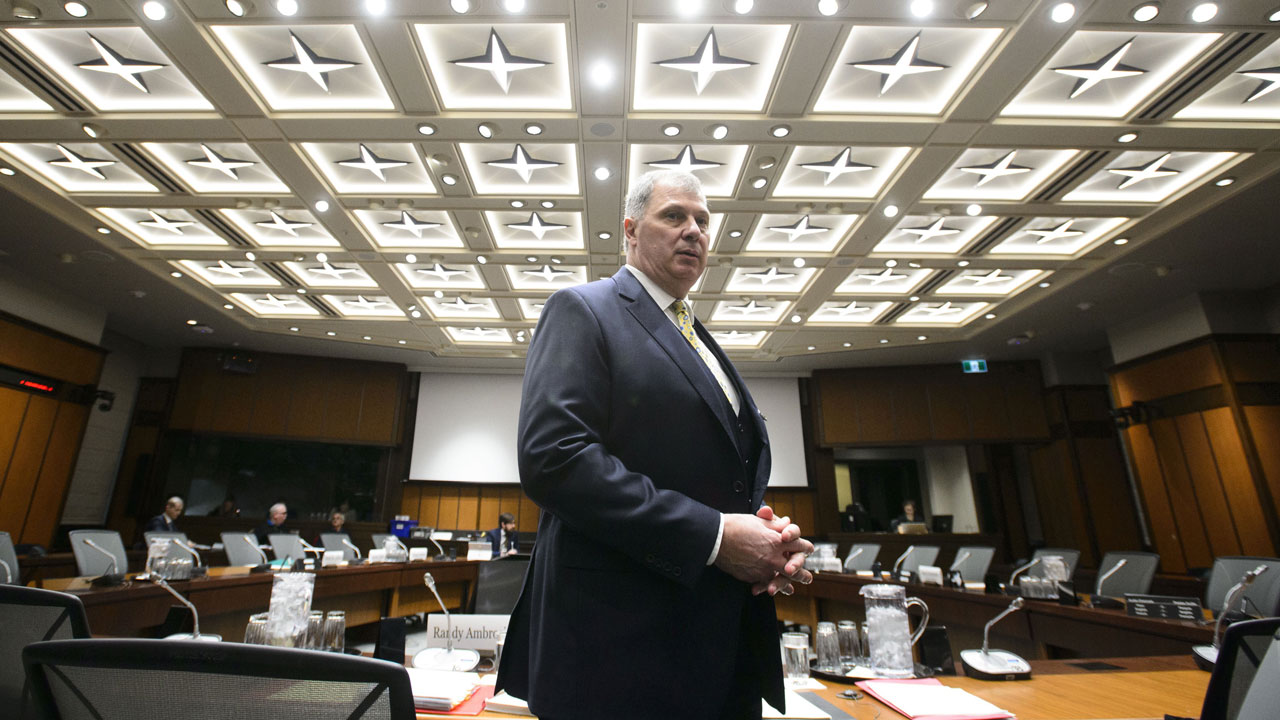While the Canadian Football League went public Tuesday about its request for up to $150 million from Ottawa, the CFL actually began the process of getting federal government funding back on April 2.
Beginning that Thursday until the last known contact between the CFL and the federal government on April 20, there was a series of seven separate communications on the league’s behalf, with three different federal government ministries. Early in their conversations with the federal government, there was communication with Catherine McKenna, the Minister of Infrastructure and Communities.
Then came Tuesday evening and the revelation by CFL commissioner Randy Ambrosie to The Canadian Press of the league’s financial request. Ambrosie told CP that the pitch for funding is a three-phase proposal with up to $120 million alone to be for relief in case of a lost season this summer and fall. Many team and league officials do not believe the 2020 campaign has a chance of playing out due to the unlikelihood that health officials will give the go-ahead for such large public gatherings due to the COVID-19 pandemic.
With the CFL being such a gate-driven league, that would present a major problem for its financial bottom line.
Ambrosie has insisted that the CFL would find ways to pay back the $150 million if the government grants the request to help keep the league afloat. The league and its teams would not write a cheque to re-pay the funds — rather, the CFL has proposed an in-kind “payback” by involving players in the community and in charitable and government-sponsored programs, such as social programs, tourism videos and public health initiatives.
On Tuesday morning, Ambrosie went on Sportsnet 590 The Fan and said, in part: “I’ve chosen philosophically not to go down that rabbit hole” of the season being cancelled. Ambrosie went on to say that he’s “hoping we can have a football season and Grey Cup in 2020,” which makes sense from the league’s public positioning standpoint when approaching the federal government for the nature of the tiered funding they’re after.
Ambrosie also made this point during the radio interview: “The bigger issue is the complexity of playing at all,” based on what health officials will let teams do. It’s hard to believe upwards of 100 players and staff being on the field in close proximity in a collision sport will be permitted amidst physical-distancing protocols.
Officials from different CFL teams have feared that the league could close business until large gatherings like concerts and games in stadiums are permitted by the government. That would likely be when there is a widely public and accessible vaccine for COVID-19, which in a best-case scenario would be in time for the 2021 season, although there is no way of knowing for sure when that may happen.
Which is why the CFL had to throw up this Hail Mary with Ottawa when the economic realities became more and more clear last month.
April 2 was a busy day between the league and public officials and represented the first time the CFL had communication with any federal government department since the pandemic hit. There was contact on the CFL’s behalf to Innovation, Science and Economic Development Canada (ISED) and Canadian Heritage (PCH). Both the director and chief of policy innovation at ISED were contacted and that same day there was communication with Rebecca Caldwell, the Director of Policy at PCH, and Mathieu Bouchard, who is the Chief of Staff at PCH.
By April 6, just a week after Prime Minister Trudeau announced a new wage subsidy program to cover all businesses whose revenues have dropped by at least 30 per cent because of the pandemic, there was contact on the league’s behalf to McKenna.
All remained quiet between the CFL and the federal government until April 17. It was then that there was communication with Caldwell and Bouchard at Canadian Heritage. Three days later, more with Kelsey MacDonald, who is the Senior Policy Advisor at ISED.
Officially, the topics of discussion between the CFL and the different divisions of the federal government were about small business, economic development and sports.
[relatedlinks]
The chief revenue streams for the CFL are market-dependent. Generally, ticket sales and money from television-rights fees are the two main drivers, although the highest-end organizations can do well with sponsorship and apparel.
The Saskatchewan Roughriders represent the flagship franchise of the CFL and in recent years have done about a half-million dollars a year in profit on merchandise, while their ticket revenues — depending on team success — is in the $17-million range. At the lowest level, it is believed that the Montreal Alouettes and Toronto Argonauts have been operating with a deficit well below $10 million annually. Saskatchewan is a community-owned team, with their records and financials public, while the Als and Argos are privately owned.
In addition to making an economic case for the need for funding with the pandemic crushing its business, part of the message to Canadian Heritage has been that the CFL is as much a cultural institution in this country as it is a professional sports enterprise.
It does appear that the COVID-19 crisis is the reason for the CFL’s interest in federal money. Public records show no government funding was received by the league during the last completed financial year.
The league has gone with Crestview Strategy, a long-time partner, to lobby on its behalf with the federal government. Two Crestview consultants, Jason Clark and Gabriela Gonzalez, are on the file.
The Trudeau government has continued to provide funding to businesses since the COVID-19 crisis began. As of this week, the federal aid package has increased to $145 billion in direct support of workers and families, $85 billion in tax deferrals for individuals and businesses, and $586 billion in credit, liquidity and capital relief.
